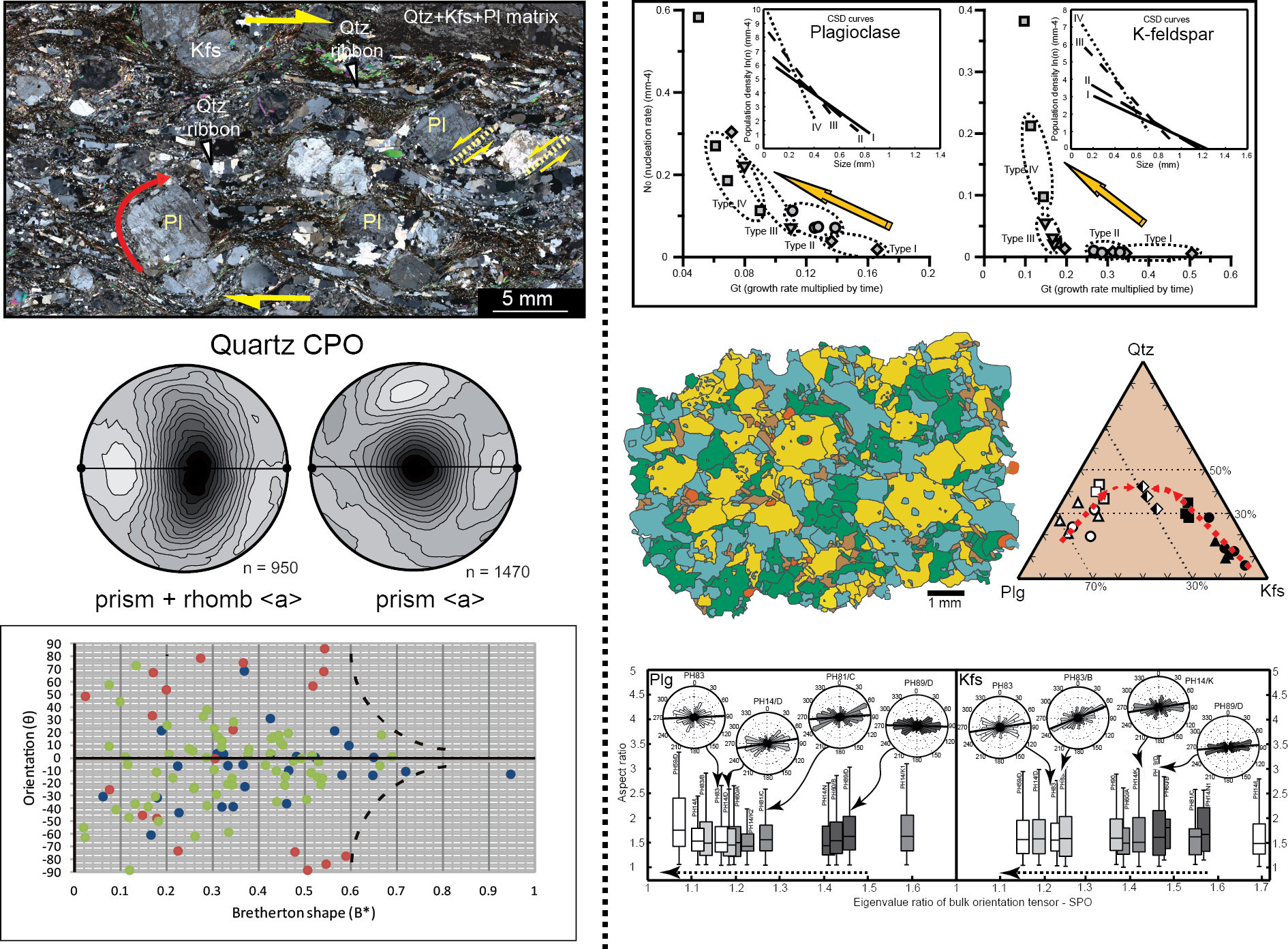Microstructural analysis
Microscopic observations and microstructural analysis provide important tools for understanding rock history, deformation and metamorphism in continental crust. It can help to define PT condition of deformation and metamorphic processes and importantly to construct reliable pressure-temperature-time-deformation (P-T-t-d) paths. We have successfully used this approach to understand the origin of migmatitic rocks and deformation mechanisms in partially molten systems as well as rheology of crustal rocks. We have used quantitative textural analysis, including grain size and grain shape statistics, shape preferred orientation, strain analysis and other to quantify deformation and deformation mechanisms in high-strain crustal shear zones. It is one of the most important research approaches developed by the CLR team and is applied in all their current projects.
Left: Microstructural methods including vorticity analysis, crystallographic preferred orientation (CPO) and microstructural observations used to study the role of clast rotation in the formation of ultramylonites (example from El Pichao shear zone, NW Argentina).
Right: Quantitative textural analysis as shape preferred orientation (SPO), grain size and mineral modal proportions used to decipher origin of migmatites by melt infiltration (Moldanubian domain, Bohemian Massif, Czechia). [link]

